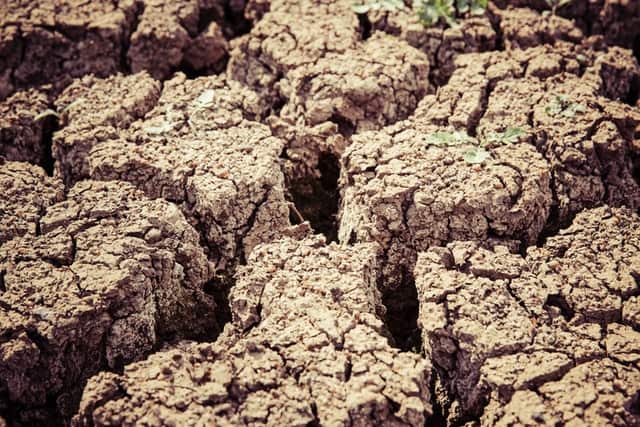
Smoke plume created from the fire by Malachi Brooks – Unsplash
10 of the Deadliest Natural Disasters that happened in China
Natural disasters are a big problem in China. In ancient beliefs, natural disasters were seen as Heaven’s response to immoral human behavior, whereby the conduct of different individuals carried different weights. While the behavior of common people ranked last, the actions of bureaucrats had a greater effect.
Major natural disasters in China include meteorological, earthquake and geological, ocean, biological, and forest and grassland fires. Altogether, there are over 100 types of various natural hazards.
In the last few decades, almost all types of major hazards except volcanic eruptions have hit China; these include earthquakes, typhoons, floods, droughts and sandstorms, storm surges, landslides and debris flows, hailstorms, cold waves, heat waves, pests and rodent disease, forest and grassland fires, and red tides. The following natural disasters are the deadliest of all time in the United States.
1. The 1931 China floods
The 1931 China floods, occurred from June to August 1931 in China, hitting major cities such as Wuhan, Nanjing, and beyond, which eventually culminated in a dike breach along Lake Gaoyou on 25 August 1931.
The official report found 140,000 drowned and claims that 2 million people died during the flood, having drowned or died from lack of food. While frequently featured in the list of disasters in China by death toll, a popular high-end estimate of 3.7 to 4.0 million fatalities is instrumental in helping the 1931 flood secure its position on sensationalist lists of the world’s deadliest disasters.
2. The 1887 Yellow River flood

Floods by Chris Gallagher – Unsplash
The 1887 Yellow River flood in Qing China began in September 1887 and killed at least 930,000 people. It was the single deadliest flood in China, in turn making it one of the top disasters in China by death toll.
The waters of the Yellow River are generally thought to have broken through the dikes in Huayuankou, near the city of Zhengzhou in Henan province. Owing to the low-lying plains near the area, the flood spread very quickly throughout Northern China, covering an estimated 50,000 square miles (130,000 km2), swamping agricultural settlements, and commercial centers. After the flood, two million were left homeless.
3. The 1556 Shaanxi earthquake
The 1556 Shaanxi earthquake, occurred in the early morning of 23 January 1556 in Huaxian, Shaanxi during the Ming dynasty. Most of the residents there lived in yaodongs artificial caves on loess cliff which collapsed and buried alive those sleeping inside.
Modern estimates put the direct deaths from the earthquake at over 100,000, while over 700,000 migrated away or died from famine and plagues, which summed up to a total loss of 830,000 people in Imperial records.
4. The 1976 Tangshan earthquake

Dryness desiccation crop land by Markus Spiske – Unsplash
The 1976 Tangshan earthquake was an earthquake that hit the region around Tangshan, Hebei, China, at 3:42 a.m. on 28 July 1976. The maximum intensity of the earthquake was Extreme on the Mercalli scale. In minutes, 85 percent of the buildings in Tangshan collapsed or were rendered unusable, all services failed, and most of the highway and railway bridges collapsed or were seriously damaged.
The official report claimed 242,769 deaths and 164,851 serious injuries in Tangshan, but when taken into account the missing, the injured who later died, and the deaths in nearby Beijing and Tianjin, scholars accepted at least 300,000 died, making it the deadliest earthquake in China and among the top disasters in China by death toll.
5. The 1920 Haiyuan earthquake
The 1920 Haiyuan earthquake occurred on December 16 in Haiyuan County, Ningxia Province, the Republic of China at 19:05:53. It was also called the 1920 Gansu earthquake because Ningxia was a part of Gansu Province when the earthquake occurred.
It caused destruction in the Lijunbu-Haiyuan-Ganyanchi area and was assigned the maximum intensity on the Mercalli intensity scale (XII Extreme). About 273,407 people died, making it one of the most fatal earthquakes in China, in turn making it one of the top disasters in China by death toll.
6. Typhoon Nock-ten

Forest Fire by Landon Parenteau – Unsplash
Typhoon Nock-ten, known in the Philippines as Typhoon Nina, was the strongest Christmas Day tropical cyclone worldwide in terms of 1-minute sustained winds. Soon afterward, the system underwent explosive intensification and became a Category 5-equivalent super typhoon early on December 25. Nock-ten weakened shortly afterward before making eight landfalls over the Philippines.
Nock-ten was the third typhoon to have caused significant impacts in the Philippines, after typhoons Sarika and Haima only two months prior, both of which struck similar areas at a similar intensity. 13 people were known to have been killed by Nock-ten.
7. The Great Chinese Famine
The Great Chinese Famine was a period between 1959 and 1961 in the history of the People’s Republic of China characterized by widespread famine. It is widely regarded as the deadliest famine and one of the greatest man-made disasters in human history, with an estimated death toll due to starvation that ranges in the tens of millions.
The major contributing factors to the famine were the policies of the Great Leap Forward of 1958 to 1962 and people’s communes, such as inefficient distribution of food within the nation’s planned economy; requiring the use of poor agricultural techniques; the Four Pests Campaign that reduced bird populations (which disrupted the ecosystem); over-reporting of grain production; and ordering millions of farmers to switch to iron and steel production.
8. The Black Dragon fire

Volcano ash cloud by Yosh Ginsu – Unsplash
The Black Dragon fire was the deadliest forest fire in the People’s Republic of China. The fire broke out in Daxing’anling Prefecture, Heilongjiang on May 6, 1987. The burning lasted almost a month when it was finally stopped on June 2, 1987. It destroyed 7.3 million hectares of forest, including one-sixth of China’s entire timber reserves.
About 266 people were wounded and 211 died in the fire leaving 50,000 homeless. It was one of the largest wildfires ever to occur, and the largest to strike China in over 300 years.
9. The 1975 Banqiao Dam failure
The 1975 Banqiao Dam failure was the collapse of the Banqiao Dam and 61 other dams in Henan, China, under the influence of Typhoon Nina in August 1975. The dam collapse created the third-deadliest flood in history which affected a total population of 10.15 million and inundated around 30 cities and counties of 12,000 square kilometers.
The flood also caused the collapse of 5 million to 6.8 million houses. The dam failure took place when many people were preoccupied with the Cultural Revolution. Most of the dams that collapsed in this disaster were built with the help of experts from the Soviet Union or during the Chinese Great Leap Forward.
10. Tongren Airport fire
Tongren Fenghuang Airport is an airport serving the city of Tongren in Guizhou Province, China. It is located in Daxing Subdistrict in Songtao Miao Autonomous County, 21 kilometers from Tongren and 34 kilometers from Fenghuang, a popular tourist destination in neighboring Hunan Province. The airport was opened in 2001.
On 5 January 1960, a fire broke out at the Tongren Airport while under construction, killing 175 and injuring 5. This is the deadliest airport fire in China.
Planning a trip to Paris ? Get ready !
These are Amazon’s best-selling travel products that you may need for coming to Paris.
Bookstore
- The best travel book : Rick Steves – Paris 2023 – Learn more here
- Fodor’s Paris 2024 – Learn more here
Travel Gear
- Venture Pal Lightweight Backpack – Learn more here
- Samsonite Winfield 2 28″ Luggage – Learn more here
- Swig Savvy’s Stainless Steel Insulated Water Bottle – Learn more here
Check Amazon’s best-seller list for the most popular travel accessories. We sometimes read this list just to find out what new travel products people are buying.









